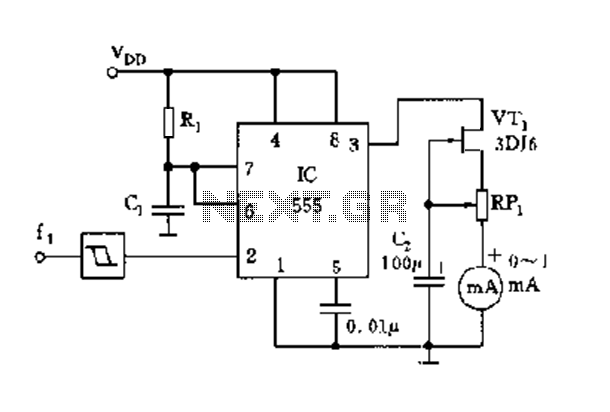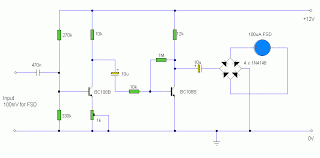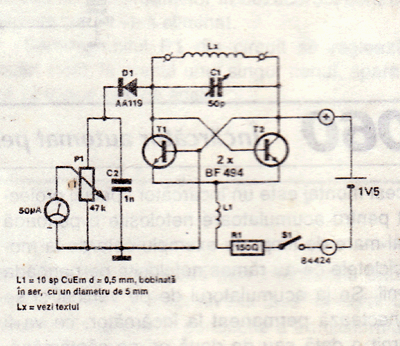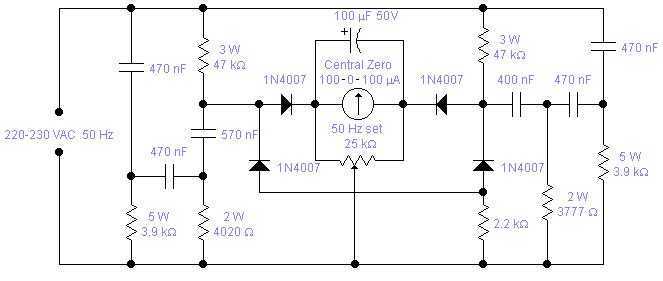
Capacitance Meter III
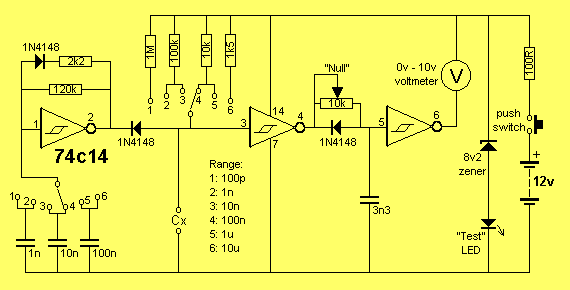
This simple add-on capacitance meter has been specially designed to help you identify capacitors from 1p to 10u. There has always been a problem identifying capacitors, due to the enormous variety in size, shape and coding. Most of the time it is impossible to identify them by size due to the different forms of construction. So you have to be able to read and interpret the codes on the body. But if the numbers are missing or microscopic in size, you have a problem. The only solution is to have a piece of test equipment to identify them for you.
The capacitance meter described is a compact device aimed at accurately measuring and identifying capacitors within a range of 1 picofarad (pF) to 10 microfarads (µF). The design of this meter addresses the common challenges faced in capacitor identification, particularly due to the vast diversity in physical dimensions and labeling methods used by manufacturers.
The meter operates by applying a known voltage to the capacitor under test and measuring the resulting charge, which is then used to calculate the capacitance value. The circuitry typically involves an operational amplifier configured as a charge amplifier, a microcontroller for processing the measurement data, and a digital display for presenting the results.
The input stage of the circuit may include a switch to select between different measurement ranges, ensuring accuracy across the specified capacitance values. Additionally, the circuit may feature a discharge path for the capacitor to prevent damage or erroneous readings from residual charge.
To enhance usability, the meter can be equipped with a simple user interface that includes buttons for range selection and a display that shows capacitance readings clearly. The device may also incorporate features such as automatic power-off to conserve battery life and a calibration mode to ensure measurement accuracy over time.
In summary, this capacitance meter is an essential tool for electronics enthusiasts and professionals alike, providing a reliable method for identifying and measuring capacitors in various applications. Its thoughtful design mitigates common identification challenges, making it a valuable addition to any electronics toolkit.This simple add-on capacitance meter has been specially designed to help you identify capacitors from 1p to 10u. There has always been a problem identifying capacitors, due to the enormous variety in size, shape and coding.
Most of the time it is impossible to identify them by size due to the different forms of construction. So you have to be able to read and interpret the codes on the body. But if the numbers are missing or microscopic in size, you have a problem. The only solution is to have a piece of test equipment to identify them for you. 🔗 External reference
The capacitance meter described is a compact device aimed at accurately measuring and identifying capacitors within a range of 1 picofarad (pF) to 10 microfarads (µF). The design of this meter addresses the common challenges faced in capacitor identification, particularly due to the vast diversity in physical dimensions and labeling methods used by manufacturers.
The meter operates by applying a known voltage to the capacitor under test and measuring the resulting charge, which is then used to calculate the capacitance value. The circuitry typically involves an operational amplifier configured as a charge amplifier, a microcontroller for processing the measurement data, and a digital display for presenting the results.
The input stage of the circuit may include a switch to select between different measurement ranges, ensuring accuracy across the specified capacitance values. Additionally, the circuit may feature a discharge path for the capacitor to prevent damage or erroneous readings from residual charge.
To enhance usability, the meter can be equipped with a simple user interface that includes buttons for range selection and a display that shows capacitance readings clearly. The device may also incorporate features such as automatic power-off to conserve battery life and a calibration mode to ensure measurement accuracy over time.
In summary, this capacitance meter is an essential tool for electronics enthusiasts and professionals alike, providing a reliable method for identifying and measuring capacitors in various applications. Its thoughtful design mitigates common identification challenges, making it a valuable addition to any electronics toolkit.This simple add-on capacitance meter has been specially designed to help you identify capacitors from 1p to 10u. There has always been a problem identifying capacitors, due to the enormous variety in size, shape and coding.
Most of the time it is impossible to identify them by size due to the different forms of construction. So you have to be able to read and interpret the codes on the body. But if the numbers are missing or microscopic in size, you have a problem. The only solution is to have a piece of test equipment to identify them for you. 🔗 External reference
